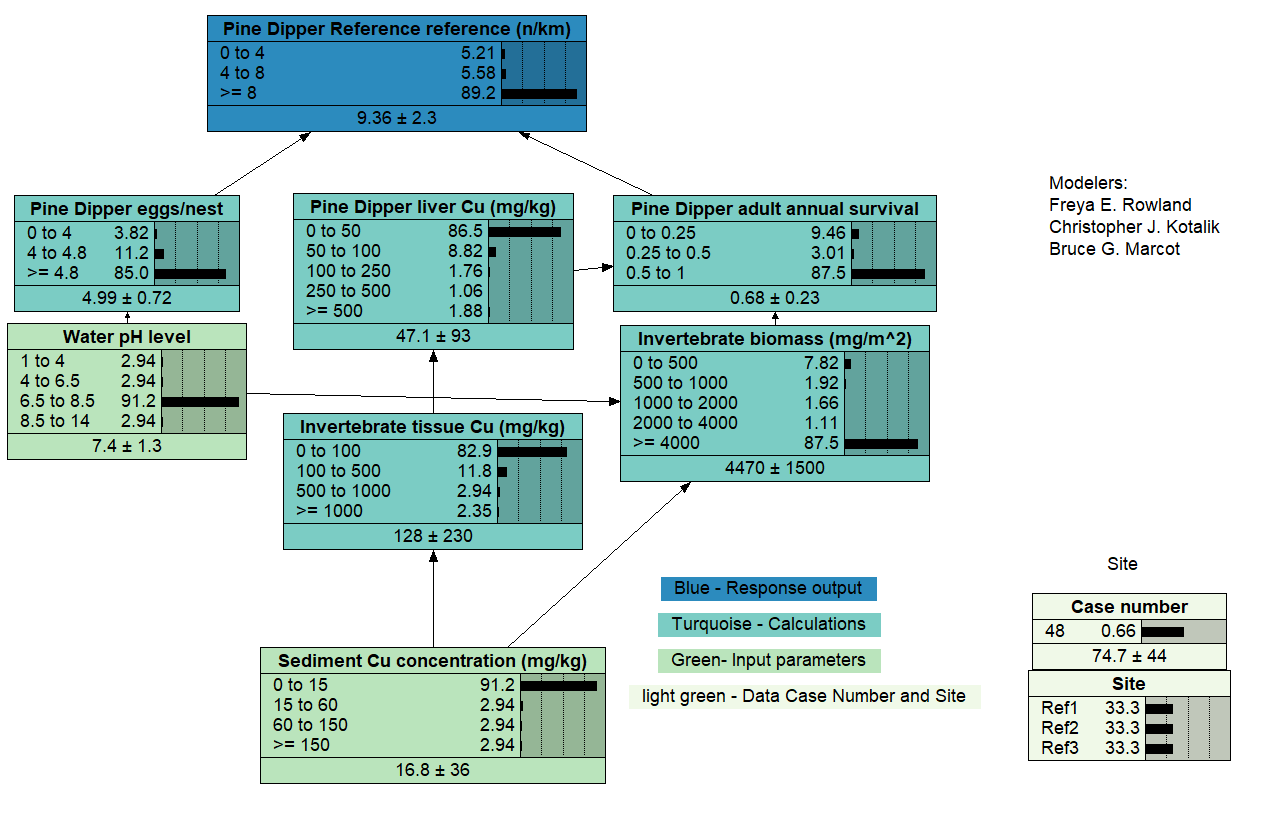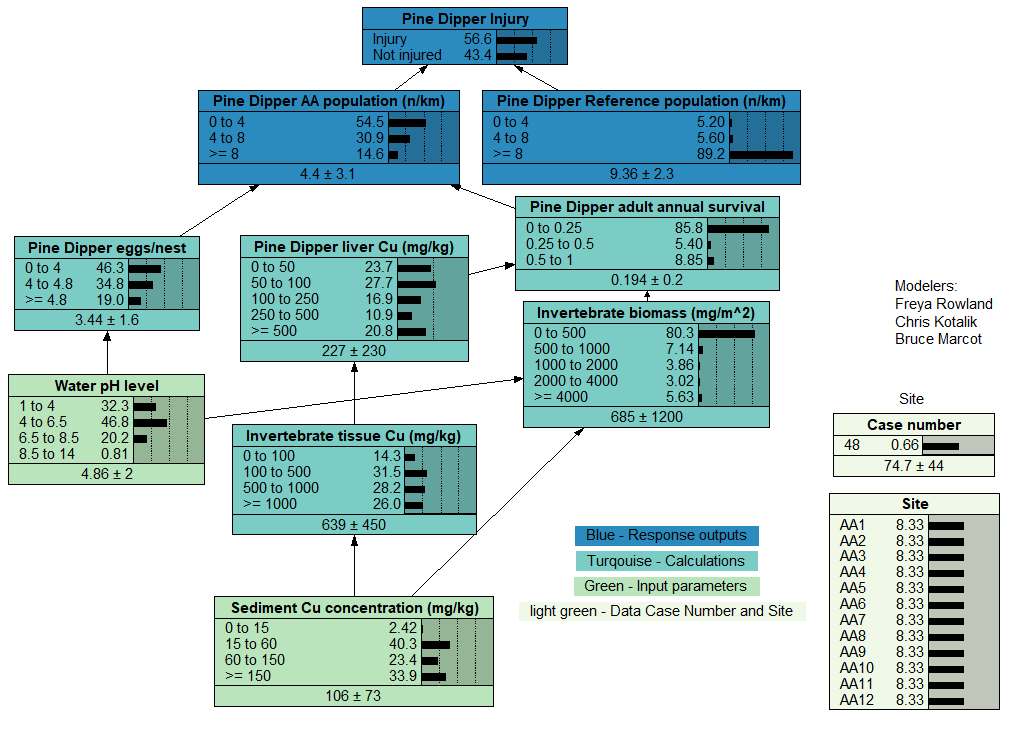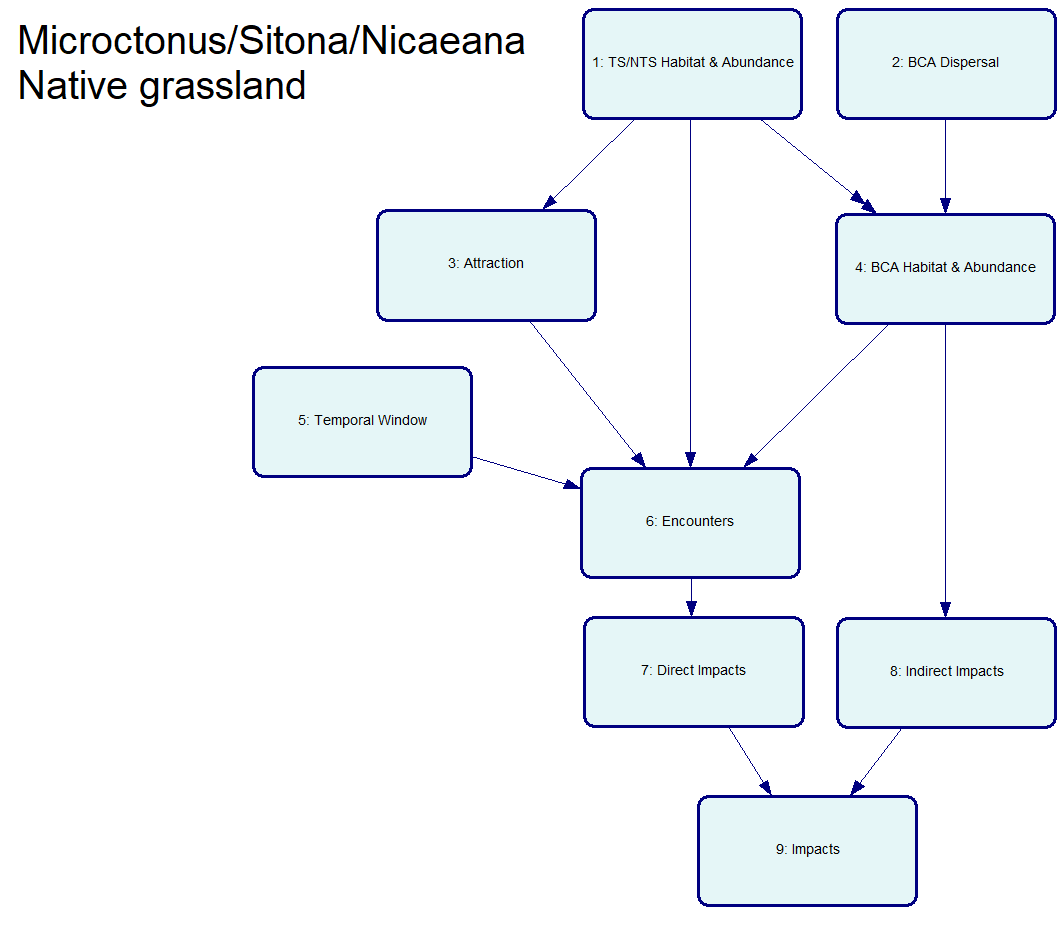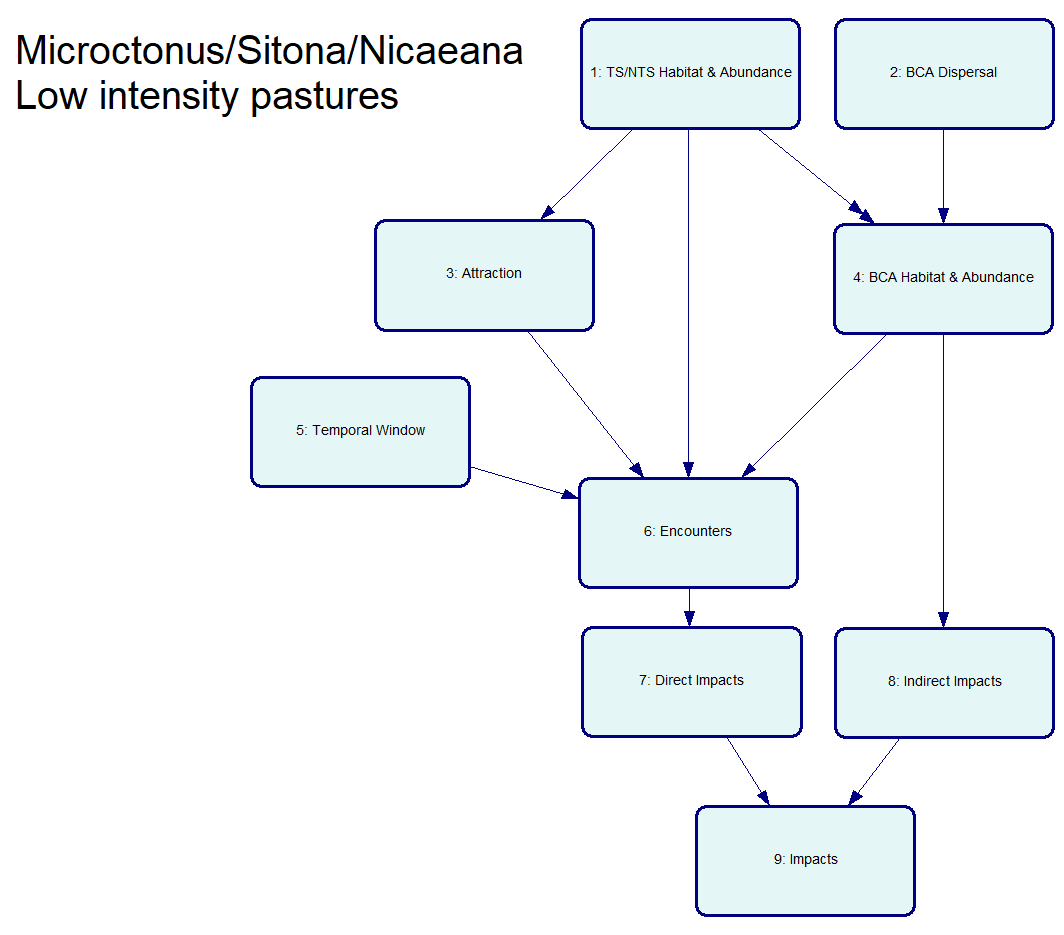The BNMA BN Repository
This repository is a resource for posting and downloading Bayesian network models for sharing with others and for providing supporting material for publications. Please respect authors' rights where noted.
Search
4 BNs found.
Assessing Environmental Injury - Reference Sites Only

This model is a variant of the "Assessing Environmental Injury - Main Model", here for reference sites only, showing the probability of environmental injury on a hypothetical endangered bird species (Pine Dipper) that is potentially affected by stressors from acid mine drainage (AMD) source. The stressors here are copper (Cu) and water pH affecting the Pine Dipper directly and indirectly through macroinvertebrate prey. This was built for the Natural Resource Damage Assessment and Restoration (NRDAR) program in the U.S., and appears as Supporting Information Figure S1 in Rowland et al. (in press).
Assessing Environmental Injury - Main Model

This model is a proof-of-concept example of how Bayesian networks (BNs) may be helpful in assessing natural resource injury within the Natural Resource Damage Assessment and Restoration (NRDAR) program in the U.S.
The data set for this model can be found at <abnms.org...>
BCA_Microctonus_NG_RiskAnalysis

BAIPA (for “Biocontrol Adverse Impact Probability Assessment”) is a new probabilistic tool that assesses the potential unwanted impact of organisms released in biological control programmes on non-target species.
The BN integrates information on the potential of an insect parasitoid used in biological control to: (1) disperse in new habitats; (2) interact with non-target species; and eventually (3) negatively impact the populations of the non-target species.
The two exemplar BNs on this repository assess the potential of an insect parasitoid released for biological control of pasture weevils in New Zealand (Microctonus aethiopoides) to disperse in new habitats, interact with on-target species (native weevils in the genus Nicaeana) , and eventually negatively impact the populations of the non-target species. Two habitats are assessed, low-intensity grazing pastures (LIP) and native grassland (NG - this model). Both models were built with GeNIe <bayesfusion.co...>
BCA_Microctonus_LIP_RiskAnalysis

BAIPA (for “Biocontrol Adverse Impact Probability Assessment”) is a new probabilistic tool that assesses the potential unwanted impact of organisms released in biological control programmes on non-target species.
The BN integrates information on the potential of an insect parasitoid used in biological control to: (1) disperse in new habitats; (2) interact with non-target species; and eventually (3) negatively impact the populations of the non-target species.
The two exemplar BNs on this repository assess the potential of an insect parasitoid released for biological control of pasture weevils in New Zealand (Microctonus aethiopoides) to disperse in new habitats, interact with on-target species (native weevils in the genus Nicaeana) , and eventually negatively impact the populations of the non-target species. Two habitats are assessed, low-intensity grazing pastures (LIP - this model) and native grassland (NG). Both models were built with GeNIe <bayesfusion.co...>
 Bayesian Intelligence
Bayesian Intelligence